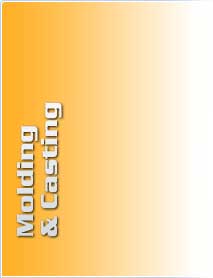

Do you need a number of investment cast parts? It may be more cost effective to use the Direct Aim process to produce the tooling for your patterns.
These molds are constructed by either machining plastic, tooling board, or metal to the desired shape and size or using a urethane material that would create the mold in the same manner of epoxy tooling. Often, a combination of processes is used to produce the mold. This helps provide a durable tool that has an increased production capacity, but can also have some features that help with special characteristics of parts such as undercuts and special draft angles. Although the lead-time of producing these molds tends to be a little longer, they can still be produced quicker than conventional injection mold tooling.
The materials for parts used in these molds are typically:
- Urethanes
- Silicones
- Epoxies
- Wax
- Foam
Unlike RTV molding, Direct Aim tooling is created by either building the mold layer by layer (SLA process) or machined directly from raw stock. If the part material is rigid, consideration of ejection pins will be required in order to remove the part from the mold.
